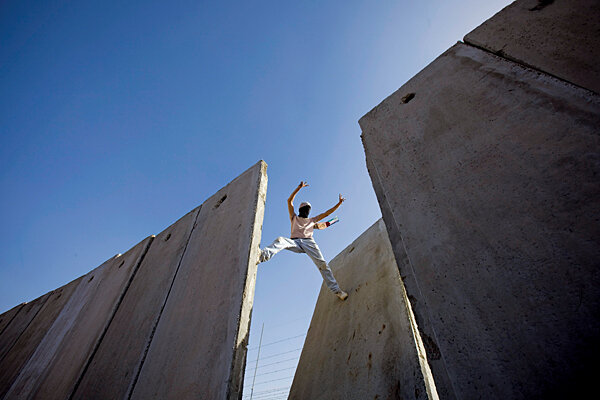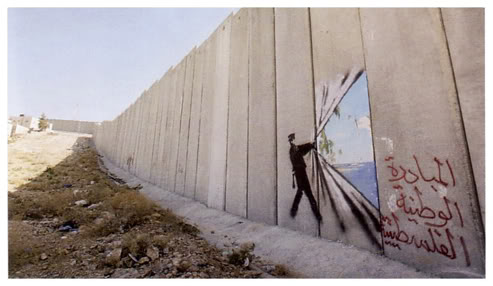“How Palestine became Colonized.” Abby Martin / teleSUR (Sept. 26, 2018)
Israel’s Apartheid Wall Stands 15 Years After UN Deemed It Illegal
teleSUR
Despite it all, 15 years later, construction continues and, as the ICJ warned, illegal annexation of Palestinian territory increases, violating the 1967 Green Line.
(July 10, 2019) — Israel’s construction of its 760 km-long separation wall in the occupied Palestinian West Bank advances as Tuesday marks the 15th anniversary since the International Court of Justice issued an advisory opinion that deemed it illegal.
While the decision is non-binding, the United Nations judiciary body ruled in 2004 that the wall violates international law and declared construction must stop immediately and Israel should make reparations for any damage caused.
By a majority of 14 to 1, the judges found that the barrier “would be tantamount to de facto annexation” of Palestinian territory. The UN General Assembly later voted overwhelmingly to demand Israel to comply with this ruling but was ignored.
The international organization called its member states to “not recognize the illegal situation resulting from the construction of the wall in the occupied Palestinian territory, including in and around East Jerusalem” and “not to render aid or assistance in maintaining the situation created by such construction”.
“The issue is not with the ICJ ruling or international law or General Assembly resolutions, but with the continuing culture of impunity that exempts Israel, an occupying power, from punishment,” Isam Abdeen, an advocacy lawyer for Palestinian rights group Al Haq told Al Jazeera.
Despite it all, 15 years later construction continues, and as the ICJ warned, illegal annexation of Palestinian territory increase, violating the 1967 Green Line.
From 2006 until Dec. 31, 2018, Israel demolished at least 1,401 Palestinian residential units in the West Bank, excluding East Jerusalem. This has left more than 6,200 people without their homes, including at least 3,134 minors.
Just in 2018, there was an increase of 10 percent compared to the prior year according to the UN Office for the Coordination of Humanitarian Affairs (OCHA) in the occupied Palestinian territory. Some 500,000 Israelis live in the occupied West Bank and East Jerusalem, areas that are home to more than 2.6 million Palestinians.
When completed, the Wall will have annexed about 46 percent of the West Bank, isolating communities into ghettos and “military zones”, encircled on only 12 percent of mandated Palestine.

Photo: Christian Science Monitor.
Israel’s Apartheid Wall
The occupation scheme dates back to November 2000 when Israeli Prime Minister Ehud Barak approved the first project to build a “barrier.” Yet the construction officially began in 2002, at the height of the second intifada, west of the city of Jenin.
Since then, approximately 85 percent of the wall’s planned 760km-long route has been built within Palestinian territory. The concrete structure is present in Bethlehem, parts of Ramallah, Qalqilya, parts of Tulkarm and throughout East Jerusalem.
It stands eight meters high, twice the height of the Berlin Wall, with watchtowers and a “buffer zone” of 30 to 100 meters wide for electric fences, trenches, cameras, sensors, and military patrols, according to the NGO Stop the Wall.
On average, according to the Israeli Defense Ministry, over 60,000 people per day entered Israel for work, medical treatment, humanitarian assistance or commerce in 2017. Those people living in the cities and villages that have already been affected by the wall have to endure constant repression in a prison-like environment.
The crossings often times are overwhelmed by people, the fastest routes are reserved to illegal Israeli settlers and discrimination and violence is a daily occurrence for Palestinians in their own land. All and all in a similar manner that Palestinians in Gaza have been facing since 1994.
“The wall itself is part of the matrix of control and rights abuses that are part of the daily Palestinian experience,” Omar Shakir, the Human Rights Watch director for Israel and Palestine, told Al Jazeera.

Posted in accordance with Title 17, Section 107, US Code, for noncommercial, educational purposes